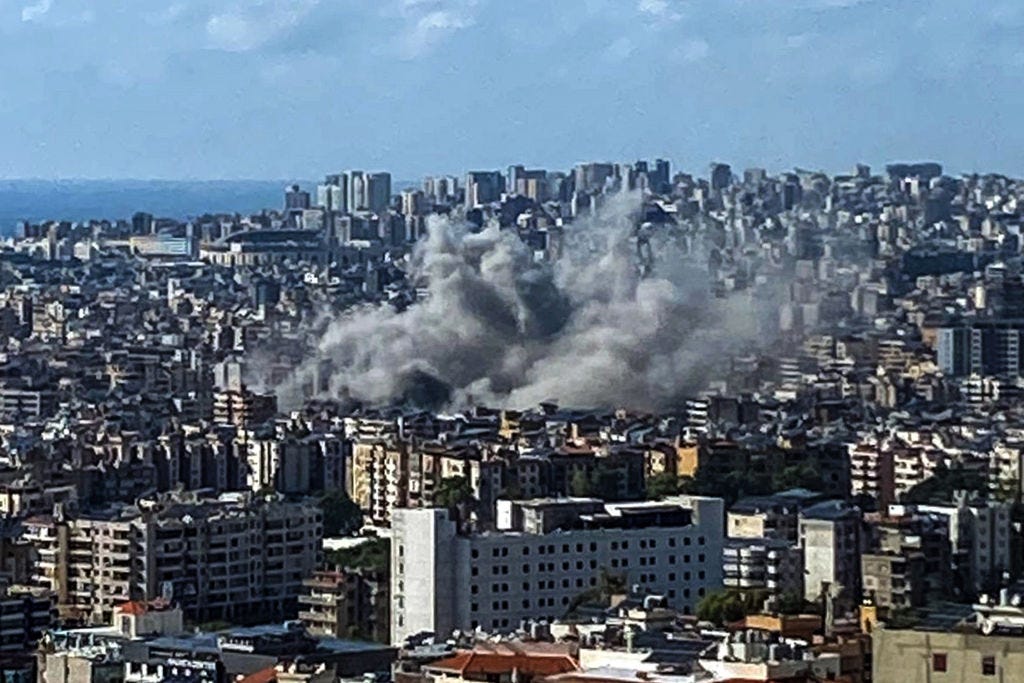Hezbollah's Decapitation
And an Elusive Cease-Fire
Smoke rises over Beirut following an Israeli strike that killed a top Hezbollah commander and members of his team (Photo by -/AFP via Getty Images)
This article first appeared in this week’s New Statesman magazine, we are sending to subscribers with their kind permission. There have been a number of developments since this piece was written. I have left the article as published and discuss the current state of the conflict, and in particular the consequences of the reported death of Hezbollah leader Hassan Nasrallah, as well as the moves for a cease-fire, in an addendum.
Until a year ago the consensus view inside Israel’s security establishment was that Lebanon-based Hezbollah was a much greater threat than Gaza-based Hamas. Hamas was fenced in, launching the occasional barrage of rockets in Israel’s general direction without truly testing its defences. There was even some hope that, frustrated by its impotence, it might be resigned to concentrating on governing the territory it controlled.
Hezbollah, by contrast, was altogether more capable, claiming up to 100,000 soldiers and with an estimated inventory of rockets and missiles normally put at around 150,000, many with precision guidance. The group was only likely to get stronger, as Iran provided it with progressively better equipment. Here the hope was that Hezbollah did not want a new war with Israel. It respected Israeli firepower, particularly after the two had clashed in 2006. In addition, Lebanon was in a fragile state, aggravated by the terrible port explosion that ripped across Beirut in 2020, for which Hezbollah is widely blamed. It currently has a caretaker government as the country’s political parties, including Hezbollah, are divided on a new government. The other potential source of Hezbollah’s restraint was that as an agent of Iranian foreign policy, its military strength was being held in reserve to remind Israel, and also the US, of the risks of going to war with Iran.
All this changed, as with so much else in the region, on 7 October 2023. Hamas found a way to get through the elaborate security barriers surrounding the Strip and conduct its deadly rampage in southern Israel. As Israel began its ruthless military response in Gaza, Hezbollah joined in the fighting, sending missiles into Israel. This was in keeping with Iran’s strategy of the “Unity of Arenas”, according to which all members of its “axis of resistance” (including the Houthis in Yemen as well as Shia militias in Iraq), were expected to support each other if one member got into a fight with Israel or the US.
Keep reading with a 7-day free trial
Subscribe to Comment is Freed to keep reading this post and get 7 days of free access to the full post archives.


